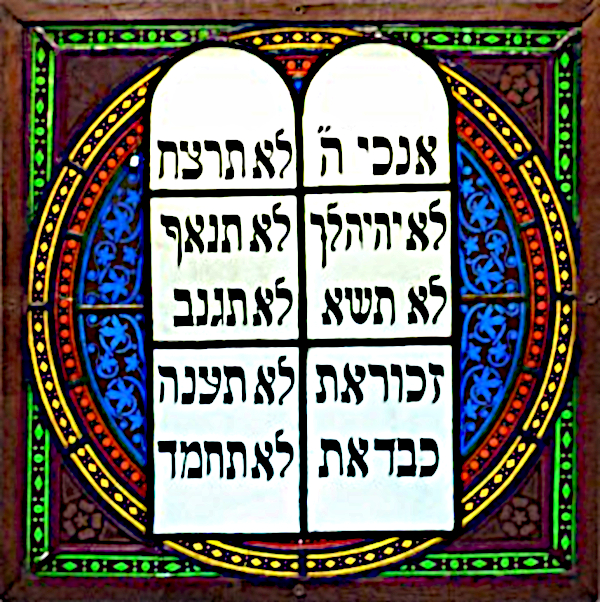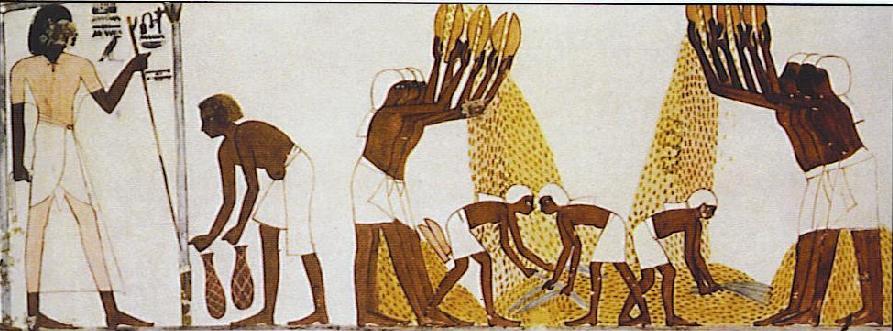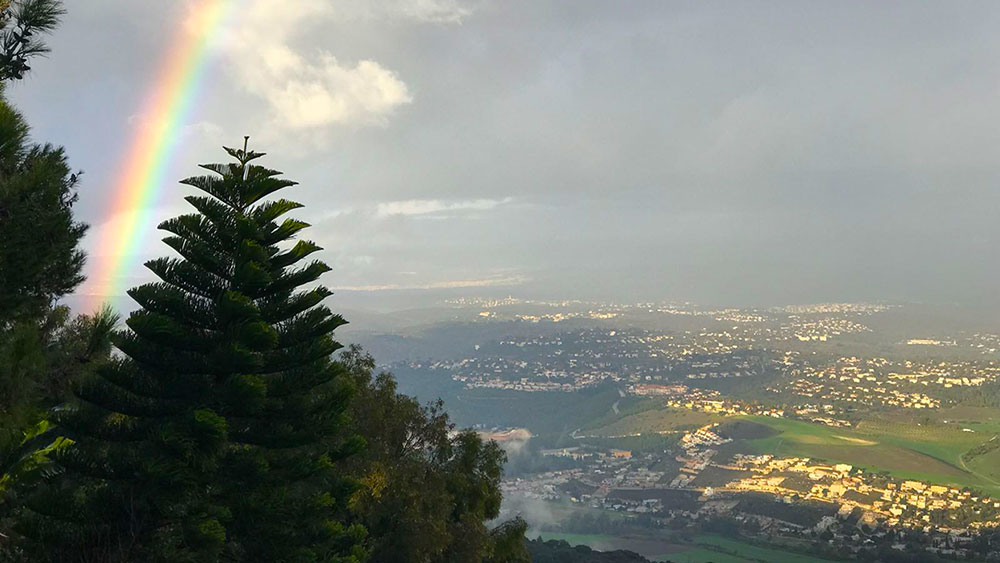
(4-5 Minute Read)
Genesis 6:9 – 11:31
The Torah parasha, or portion, of Noah, recounts the story of the famous Biblical character of the same name. The Most High was grieved at the wickedness of humanity; but Noah, being “righteous, pure, and blameless in his generation,” found favor with Him. The Master of the Universe informed Noah that He would destroy the earth due to widespread evil with an immense flood of water. He then commanded Noah and his family to build a massive wooden boat called an ark to save themselves and a selection of animals.
As a widespread flood ravished the earth, Noah, his family, and the pairs of animals remained safe in the ark. All breathing creatures outside of the ark, both human and animal, died.
As the waters eventually receded, the ark came to rest on the mountains of Ararat. Noah released a raven and then a dove out of a window of the ark. After several attempts, the dove first returned with an olive leaf in its bill. Noah realized that the waters had subsided.
After exiting the ark, Noah built an altar to the Master of the Universe and offered burnt offerings from among the clean animals and birds. The Most High declared, “I will never again destroy the earth and every living being, as I have done.” The Eternal One confirmed this promise with an everlasting covenant symbolized by the rainbow. The Almighty further declared that because mankind had been made in the image of the Creator, He would require a reckoning for the shed blood of every human being; whoever sheds the blood of another man, by man his own blood shall be shed.
Noah was the first to plant a vineyard. He drank wine and became intoxicated, uncovering himself in his tent. Ham, Canaan’s father, saw his father’s nakedness and told his two brothers. Shem and Japheth entered the tent with a cloth, walking backwards with their faces turned away, and covered their father.
When Noah awoke and learned what Ham had done to him, he said, “Cursed be Canaan. Blessed be the Most High of Shem; may He make Japheth prosperous, dwelling in the tents of Shem. And Canaan shall serve them both.”
Everyone on earth had the same language. As some migrated east, they settled in Shinar. They said, “Let us build a city and a tower to the heavens, lest we be scattered.” The Most High determined that if this was how mankind, with one language, had begun to act, then nothing would be out of their reach. Therefore the Eternal One confused their language and scattered them over the whole earth; they stopped building the city, which was then called Babel.
The bloodlines of Japheth, Ham, and especially Shem are recorded in detail, elaborating on the ten generations following Noah. Abram and his barren wife, Sarai, along with his father and nephew, Terah and Lot respectively, left Ur of the Chaldeans for the land of Canaan. But they stopped in Haran and settled there.

One of the most important aspects of the Torah portion of Noah is the extrapolation of the Seven Laws of Noah, as noted in the Torah text and further defined by the Talmud and ensuing rabbinical commentary. The Seven Laws of Noah include:
Establish a just system of laws and court proceedings.
Do not blaspheme or curse the Most High.
Do not practice idolatry.
Do not engage in illicit sexuality, especially incest.
Do not participate in bloodshed and murder.
Do not rob or steal.
Do not eat flesh from a living animal.
These seven laws were given to Noah and all mankind before the revelation of the Almighty at Mount Sinai, which included the giving of the Aseret HaDibrut, or Ten Commandments and the rest of the Torah. Thus, the Noahide Laws comprise a code of conduct for all mankind, whereas the 613 commandments of the Torah are obligatory specifically for the Jewish people.
Some have noted that many of the Ten Commandments are similar to the Seven Laws of Noah. While they may be parallel in a sense, they have a different focus and purpose.

When the Eternal One instructed Noah and his sons regarding the “Laws of Noah,” He was providing guidelines on how to create a properly functioning society for perpetuity. The Most High had just promised that He would never again completely destroy the earth and all living creatures with a flood. However, mankind was obligated to create healthy communities and societies that would not descend into the appalling wickedness that had provoked the judgment of the Creator in the first place. While the covenantal promise of the Almighty was unconditional and everlasting, humanity was still required to “do our part” to ensure that such universally evil conditions never again existed on the earth. Accordingly, the instructions given by the Master of the Universe in the days of Noah and succinctly defined by the Talmud relate primarily to concepts that essentially distinguish mankind from animals and also ensure the worship and reverence for the monotheistic Creator. For instance, animals eat each other and their living flesh; they “steal” food from one another; they have no ability to establish courts of justice; they have no boundaries for their reproductive functions other than natural, biological guidelines; they have no ability to connect with or worship the Most High on an advanced level. And there is no realistic expectation that animals should ever conduct themselves “on a higher level” because they are, in fact, animals.
Not so with mankind. As the Master of the Universe repeated in Bereshit (Genesis) 9, humanity is made in the image of the Creator. Therefore, humans are expected to operate on a much higher level. The Seven Laws of Noah are the most basic categories of these “elevated behaviors” that distinguish mankind from animals, and enable us to create successful families, communities, and societies.
In contrast, the revelation at Mount Sinai had a different intent. The Almighty had freed the Jewish people from Egyptian slavery and was in the process of bringing us to the “Promised Land” of Israel. The Aseret HaDibrut, or Ten Commandments, even commence with the phrase, “I am the L-RD your G-d Who brought you out of the land of Egypt. You shall have no other ‘gods’ before Me…” (Shemot / Exodus 20:1-3)
Whereas the Seven Laws of Noah relate to humanity distinguishing themselves the animals in order to create a functioning society that avoids degenerating into pre-Flood levels of widespread wickedness, the Ten Commandments and the rest of the Torah have a related but slightly more nuanced purpose. The Torah can be defined in one sense as the Most High’s “instruction manual” on how to escape spiritual “slavery and bondage.” The Hebrew word for Egypt, Mitzrayim, relates to bondage and constraints. In our personal lives, we all have our own “mitzrayim,” our “constraints” that we must reject and rise above in order to thrive spiritually (and in some cases physically as well). But just as the Eternal One personally delivered us from the physical slavery of Egypt, so too He has enabled us to escape our “spiritual Egypt” by giving us the Torah. And the Torah commences with the Ten Commandments and the Master of the Universe’s reminder that He is the Almighty Being Who delivered us from Egypt (both physically and spiritually).

Some have asked why the Seven Laws of Noah aren’t identical to the Ten Commandments. Why, for instance, are the laws of Shabbat, or Sabbath, and honoring one’s parents not included?
First, it should be noted that while these ideas are not included in the list of seven obligatory commandments for all persons (not just Jews), the concepts of the seventh-day Sabbath as well as honoring parents are, in fact, clearly documented as pre-Torah elements. First, Bereshit (Genesis) 2:2-3 notes that the Most High sanctified the seventh day of Shabbat, since that was the day He rested from Creation. Additionally, Bereshit (Genesis) 9 describes an incident in which Ham and Canaan disrespected their father and grandfather (or far worse, as noted by the rabbinical sages). Shem and Japheth, in contrast, showed immense respect for their father. These sons and grandson were cursed and blessed respectively. Thus, the concept that respecting our parents is a form of righteousness and results in blessings is clearly noted in the text, even if it is not included in the Seven Laws of Noah.
Secondly, and perhaps more importantly, it is important to understand the dynamics of the Torah and how Judaism teaches that it existed even before the creation of the world. There are a plethora of deep ideas on this concept, but one simple way of comprehending this concept is relating the principles of the Torah to the laws of physics (lehavdil). Just as there are laws of physics that govern our physical universe, the laws of Torah define our spiritual universe. Dropping an object anywhere on earth under normal circumstances will result in the item falling to the ground due to the laws of physics; so, too, will a prohibited action such as adultery generally destroy relationships that are the core basis of families and communities according to the principles of the Torah. Just as physical actions have physical reactions and consequences according to the laws of physics, spiritual actions likewise have reactions and consequences, commonly denoted in the Torah as blessings and curses (e.g. Devarim / Deuteronomy 30).

As mankind progressed, the Most High gradually revealed the Torah (which had existed even before the creation of the world) to humanity. Perhaps one analogy could be a child learning mathematics (lehavdil). A child in elementary school might be learning multiplication tables, whereas a teenager in high school might be studying algebra. The high school student cannot understand algebra without first understanding basic multiplication and other mathematical functions. A child in elementary school will not be graded poorly if he or she is unable to perform algebraic equations, since they are not yet at that level. However, in contrast, if the high school student cannot complete his or her algebra homework and his or her capabilities only include basic multiplication, for instance, that student will receive a poor grade. So it is with the various stages of revelation of the Almighty’s Torah. And it should be noted that just as mathematical principles exist regardless of whether or not the student is aware of them, so too the Torah existed and still exists for perpetuity irrespective of the level to which mankind is aware of the mitzvot, or commandments.
This revelation by stages probably relates, at least partially, to man’s inability to properly observe the Torah in its entirety. Besides the instruction to be fruitful and multiply, essentially Adam and Eve only had one commandment to observe. They were prohibited from eating the fruit of the Tree of the Knowledge of Good and Evil. And they failed abysmally. As described in the parasha, or Torah portion, of Noah, without any further guidelines mankind descended into such evil that universal destruction and a “reset” was required. Then, the Seven Laws of Noah were introduced and defined, as they were necessary to further separate humanity from the animals and enable the establishment of proper societies. Afterwards, Abraham sought to connect with the Almighty in a very special way. Abraham, Isaac, and Jacob reached unprecedented heights of spirituality, but not without their own mistakes and failures along the way. The Most High determined that their descendants, also known as the “children of Israel (Jacob)” and the Jewish people, would receive the complete revelation of the entire Torah beginning with the Aseret HaDibrut, or Ten Commandments. And from the first sin of worshipping the golden calf and onward, the history of the Jewish people has been defined and dictated by our adherence to Torah or the disobedience thereof.
May the Holy One, Blessed be He, grant us all to live our lives in accordance with His guidelines that enable our families and societies to function at optimal levels. And may we ever encounter higher and higher revelations of the Torah in order to connect with the Holy One, Blessed be He and fulfill our true purpose of existence.


